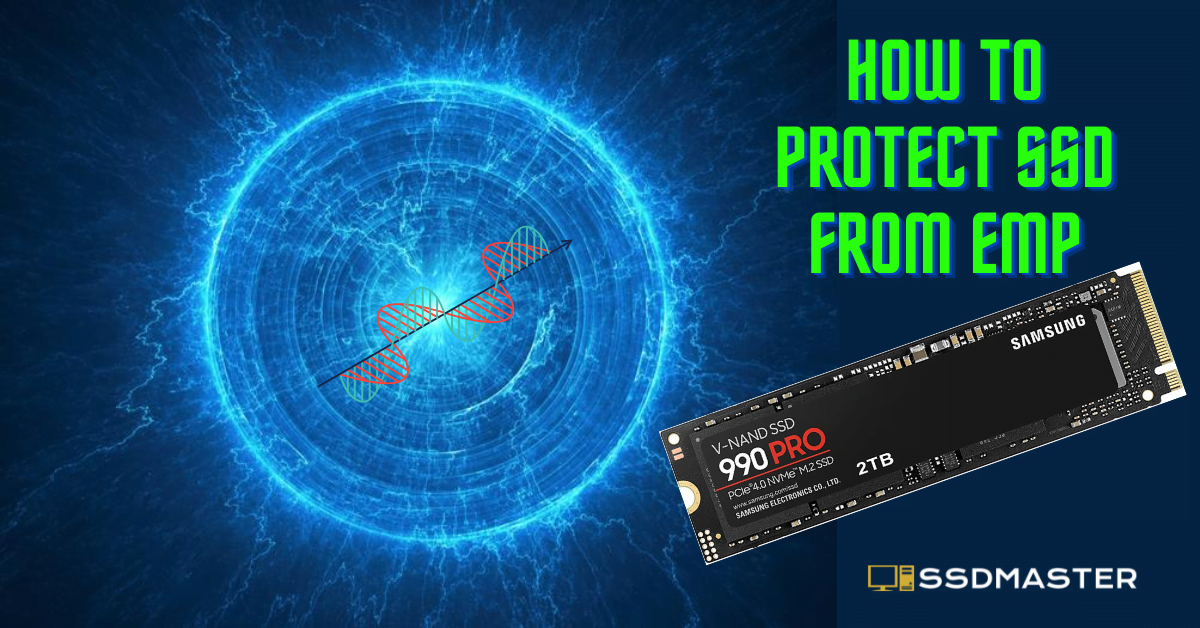In today’s world, digital data is increasingly valuable, with many businesses, organizations, and individuals relying on electronic devices to store sensitive information. However, electronic devices are susceptible to damage from electromagnetic pulses (EMPs), which can destroy data stored on solid-state drives (SSDs). This article explores what EMPs are, the risks they pose to SSDs, and the steps you can take, how to protect SSD from EMPs.
What are EMPs?
EMPs are sudden bursts of electromagnetic energy that can occur naturally or be generated by human-made devices. EMPs can be caused by solar flares, lightning strikes, or nuclear explosions, among other things. When an EMP occurs, it releases a surge of energy that can cause damage to electronic devices and electrical systems.
What are the Risks of EMPs to SSDs?
SSDs are particularly vulnerable to EMPs because they store data electronically. EMPs can cause the electrons in the SSD’s memory cells to become excited, altering their state and corrupting the stored data. In some cases, EMPs can completely destroy an SSD, rendering it unusable.
How to Protect Your SSD from EMPs
There are several steps you can take to protect your SSD from EMPs:
1. Use a Faraday Cage
A Faraday cage is a metallic enclosure that can shield electronic devices from EMPs. By enclosing your SSD in a Faraday cage, you can protect it from the effects of an EMP. You can purchase Faraday cages or build your own using materials such as aluminum foil or wire mesh.

2. Use EMP Shielding Products
EMP shielding products, such as EMP bags or EMP shielding tape, can also be used to protect your SSD from EMPs. These products are designed to block or absorb electromagnetic radiation, preventing it from damaging your SSD.
3. Store Your SSD in a Safe Location
Storing your SSD in a safe location can also help protect it from EMPs. A location with limited exposure to electromagnetic radiation, such as a concrete basement or an underground vault, can be an effective way to protect your SSD from EMPs.
4. Back Up Your Data Regularly
Even with protective measures in place, it is still possible for an EMP to damage your SSD. That is why it is essential to back up your data regularly. By backing up your data to an off-site location, you can ensure that your data is safe even if your SSD is damaged by an EMP.
Can EMPs affect other types of electronic devices?
Yes, EMPs can affect other types of electronic devices, including laptops, desktop computers, and other storage devices such as USB drives and external hard drives. Therefore, it’s important to take protective measures to safeguard all electronic devices that contain valuable data.
In addition to the protective measures mentioned above, there are a few other things you can do to minimize the risks of EMPs to your electronic devices. For example, you can limit your exposure to devices that emit electromagnetic radiation, such as cell phones, laptops, and other wireless devices.
It’s also a good idea to invest in surge protectors, which can help to protect your devices from power surges caused by lightning strikes or other electrical disturbances. These can also help to prevent damage from EMPs.
Overall, protecting your SSD from EMPs requires a proactive approach. By taking the necessary steps to shield your SSD from electromagnetic pulses, you can ensure that your valuable data remains safe and secure. Don’t wait until it’s too late, start protecting your devices today.
Conclusion
EMPs are a real threat to electronic devices, including SSDs. To protect your SSD from EMPs, you should use a Faraday cage, and EMP shielding products, store them in a safe location, and back up your data regularly. By taking these steps, you can ensure that your digital data remains safe and secure, even in the face of an EMP.
FAQs
What is a Faraday cage?
A Faraday cage is a metallic enclosure that can shield electronic devices from electromagnetic pulses (EMPs).
Can EMPs be prevented?
It is challenging to prevent EMPs entirely, but protective measures such as using Faraday cages and EMP shielding products can reduce the risk of damage to electronic devices.
How often should I back up my data?
It is recommended to back up your data regularly, ideally daily or weekly, depending on your data usage.

